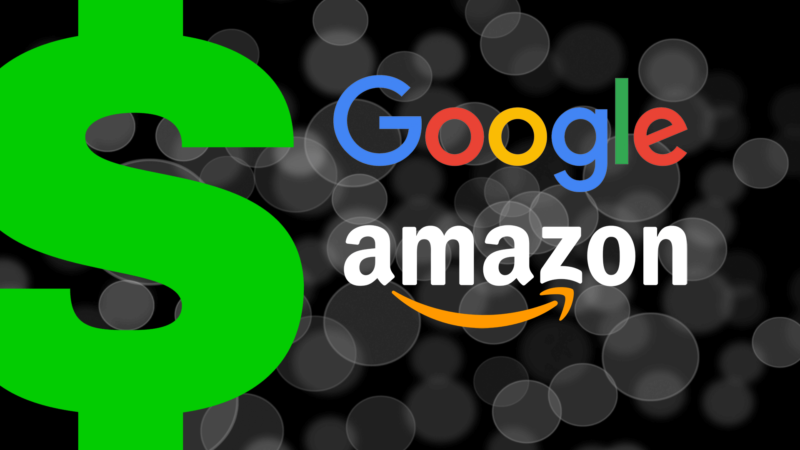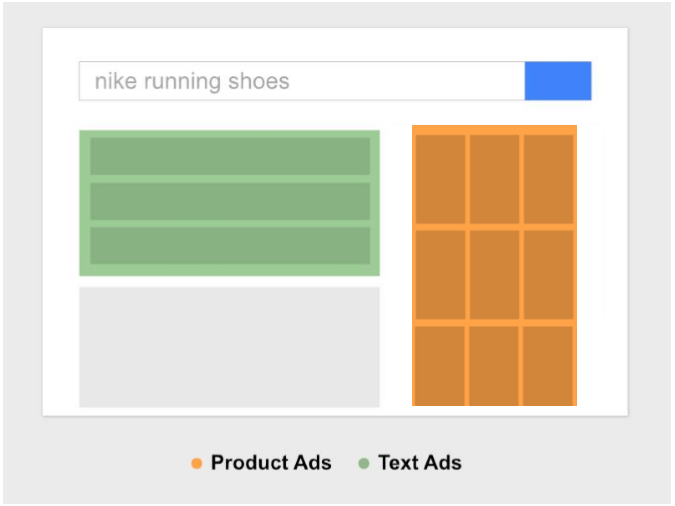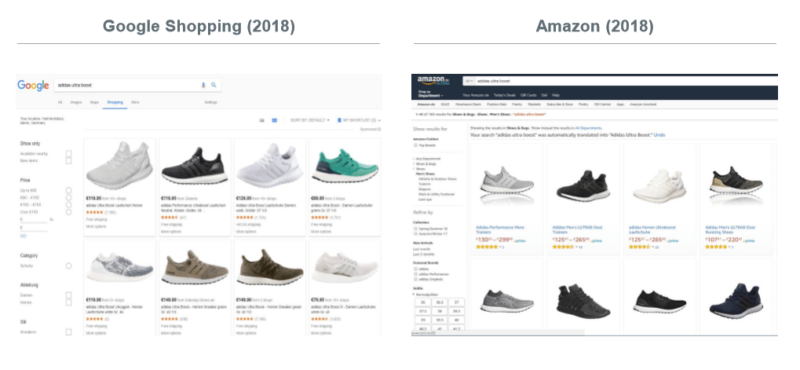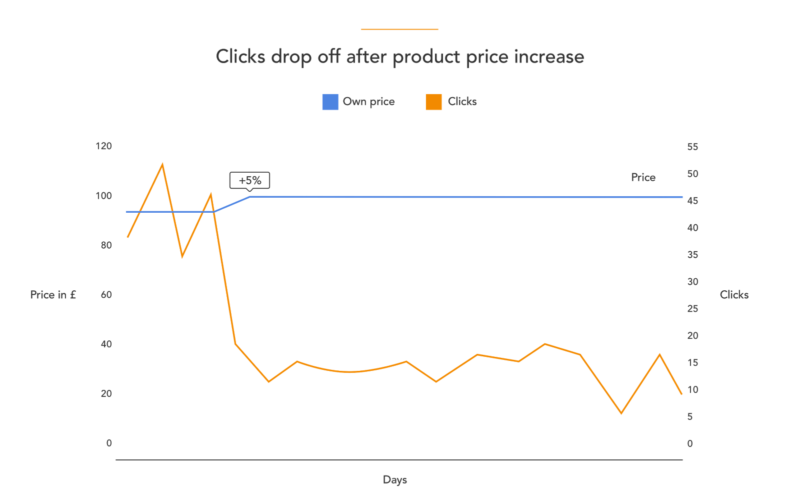Giants collide: Google’s impending showdown with Amazon
With Google pushing into retail and Amazon into advertising, where should you invest your ad budget? Contributor Andreas Reiffen says it depends on what you're selling and how much you have to invest.
Talk in the digital advertising space has traditionally focused on Google and Facebook’s digital duopoly, each fighting for more of your advertising dollars. But for Google, the real competition is coming from elsewhere.
Over the last few years, Google has pushed further and further into the retail space. Simultaneously, Amazon expanded its advertising platform. In the end, they both want the same thing: your purchase intent.
As these two tech behemoths continue to get more and more similar, who will lead? And more importantly, what should you do about it?
Google’s bid to become a retailer
We’re used to thinking of Google as a search engine. For advertisers, Google’s search engine results page (SERP) is composed of text and product (Google Shopping) ads. The popularity of these product ads with digital marketers has grown in popularity. According to Adobe’s Digital Index, spend on Google Shopping has surpassed that of text ads in every market.
This is especially true when it comes to mobile ad spend, for which, in our clients’ experience, Google Shopping is far more profitable. In the UK, for example, they spend around 74 percent of their mobile ad budget on shopping ads.
Due to the popularity and success of its shopping ads, Google has made a significant investment in their placement and prominence. The search giant’s rationale appears to be that product ads are more attractive to users, generating more revenue for retailers (and thus themselves).
It then threw a “purchase on Google” option into the mix. This allows shoppers to complete their purchase without ever leaving the Google interface. Google also started surfacing product ads for super generic search terms. This indicates that it wants to own the browsing aspect of online shopping, in addition to the purchase.
The convergence of two giants
So, what is the net result? As Google has continued to experiment with ever larger and more prominent placements for its product ads, the product SERP has taken on a startling resemblance to an Amazon results page.
The two business models look set for a collision course. With the addition of a buy button, Google is attempting to become a retail marketplace. Amazon, on the other hand, has been expanding its sponsored product ads offering, which looks increasingly like an advertising platform.
Even more telling, Google just announced what it calls Shopping Actions and Google Express.
Shopping Actions allows users to create a universal shopping cart of items from multiple retailers. Once they have a full cart, shoppers then use a Google-hosted checkout service to pay for all items at one time. Google Express is their new foray into last-minute delivery. This is undoubtedly Google taking another swipe at Amazon and other large retailers’ market.
Both Amazon and Google have invested in logistics, too, although with an important difference.
With its recent leasing of 40 cargo planes and a $1.5 billion investment in a cargo hub to keep them, Amazon is opting to own logistics from end to end. It has also invested heavily in delivery technology with a fleet of drones and a doorbell that grants the delivery man access to your house.
Google is comparatively late to the logistics game, but it’s certainly making up for lost time. Under its holdings firm, Alphabet, it has purchased no fewer than eight robotics companies in the last few years.
Owning self-driving pioneer Waymo puts Google among the strongest players in the driverless car industry. True, it hasn’t turned this technology to last-mile delivery just yet, but it seems like a logical next step given Google’s trajectory.
What does this mean for you?
The reality of today’s online advertising world is that it’s less a choice between online ad providers and more of a choice about how much to invest in each provider. That decision will likely differ depending on your market, product offering and whether you have your own brand or sell several.
As with anything in the performance marketing arena, you need to afford a good amount of trial and error before working out which channels work best for you. The most important thing when running your tests is to make sure you account for incrementality and margins. This will give you a true understanding of a campaign’s impact on your gross profits.
That said, it can’t hurt to offer a few tips for advertising on Google and Amazon. We picked these up through experience and extensive testing:
Advertising on Google
Our number one tip for advertising on Google is to ask yourself, “How different is our price for the same product from other vendors?” Our tests consistently show that the retailer with the cheapest price outperforms all the other vendors.
Changing the price of your products can massively impact your product listing ad (PLA) performance. For one retailer we work with, just a 5 percent price increase coincided with a 60 percent decrease in clicks.
On average, we found that lower-priced products drive performance across the board.
Depending on your situation, you may or may not be able to change prices to reflect the market on Google Shopping. Even if you can’t, you can use price competitiveness as a signal in your bidding.
For example, you wouldn’t want to bid very much (or anything at all) on products for which you aren’t competitive.
Advertising on Amazon
As a brand or retailer, making the decision whether or not to advertise on Amazon can be a tricky one. If you do decide to sell on the Amazon Marketplace, or to Amazon directly, you should take advantage of Amazon’s most popular pay-per-click (PPC) ad type, the Amazon Sponsored Product ad.
In contrast to Google Shopping, Amazon allows advertisers to decide which keywords they want their products to appear for on its search results page.
This gives back one of the most valuable options for advertisers: They can set up different campaigns for brand, generic and competitor keywords and test for sales incrementality.
Contributing authors are invited to create content for Search Engine Land and are chosen for their expertise and contribution to the search community. Our contributors work under the oversight of the editorial staff and contributions are checked for quality and relevance to our readers. The opinions they express are their own.
Related stories
New on Search Engine Land






